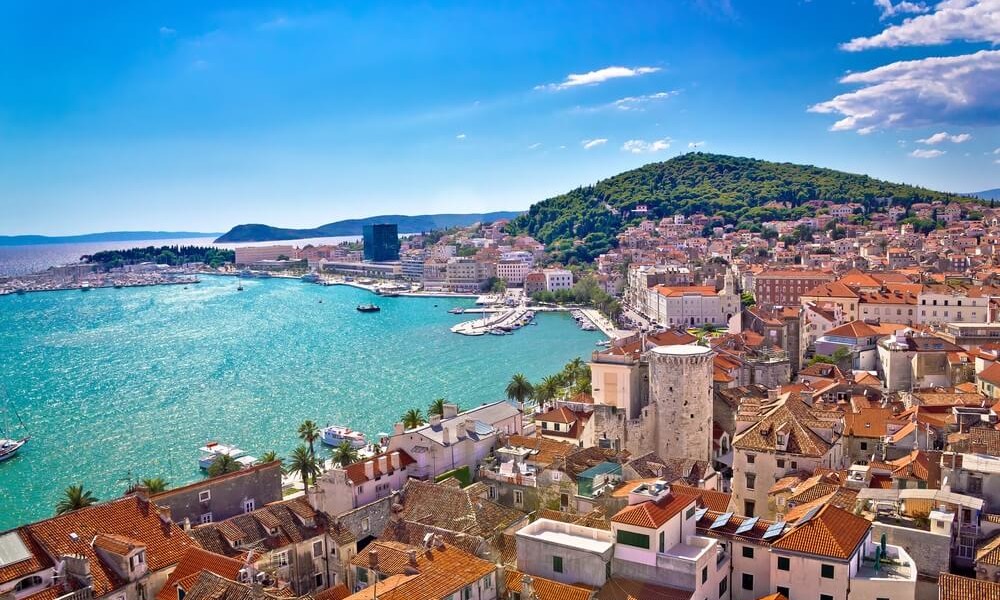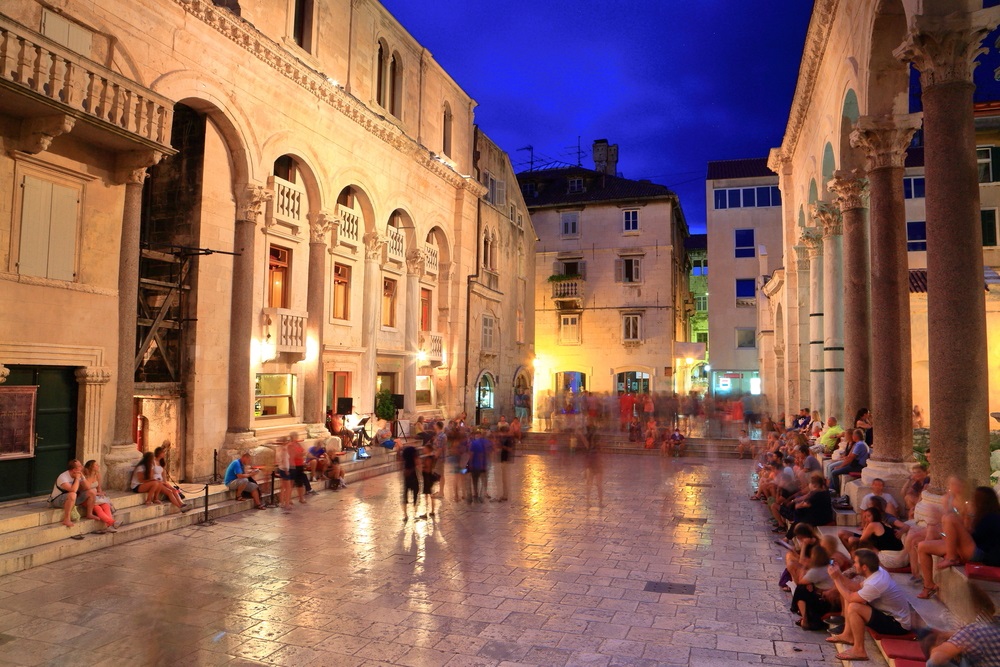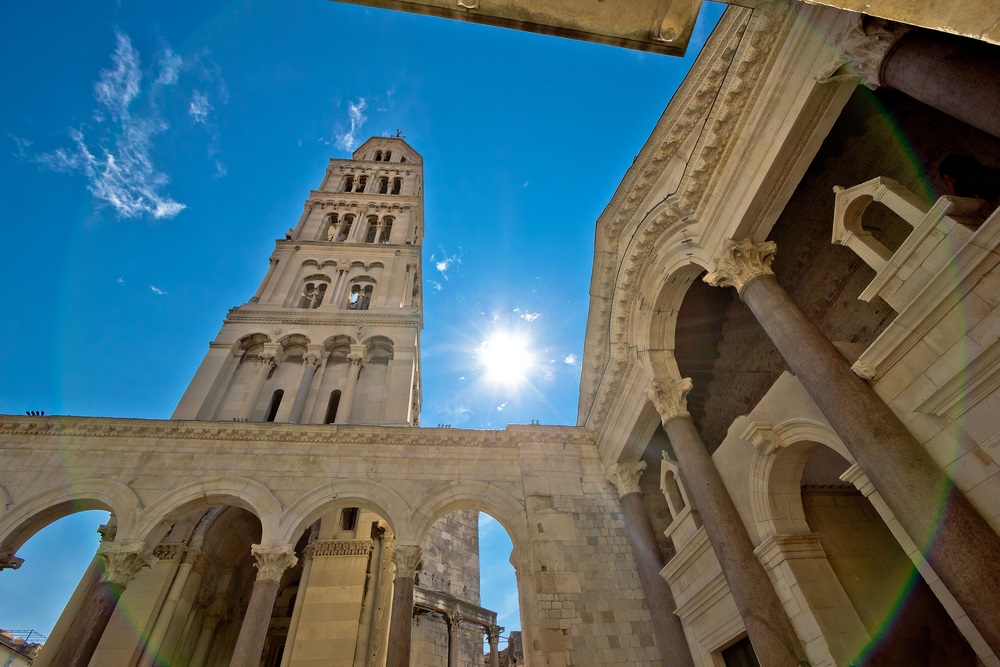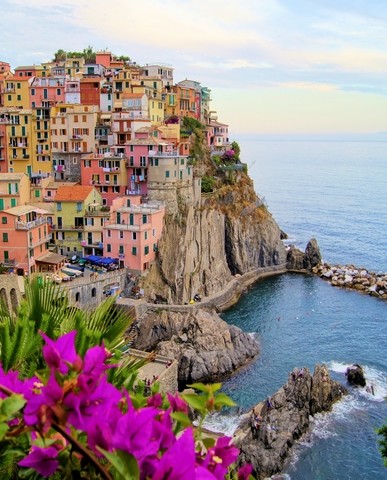Though it is the second largest city in Croatia and one of the most popular destinations on the Adriatic, Split has ridden under most traveler’s radars until recently. Home to over 200,000 inhabitants, this scenic and ancient Adriatic city is a popular alternative to the more popular (and crowded) Italian city’s of the Mediterranean.
Originally a small Greek colony founded in 605 BC, the settlement flourished after the construction of Roman Emperor Diocletian’s palace in 305 AD. Over the ages it has seen many rulers and nationalities, from the Byzantine Empire to most recently under Yugoslavia until 1991. Due to its location on the Adriatic Coast, the city is a valuable transportation hub for air, land, and sea, aiding in its development as a major Croatian tourist destination.
But who is Split?
Home to the ancient Diocletian Palace, a colorful and scenic harbor, and classical streets with traditional shops and restaurants, Split is a UNESCO World Heritage Site and treasure trove of historic attractions. It has survived empires and kingdoms to become one of the chief cities of the independent state of Croatia while maintaining its rich culture and historic atmosphere that tourists are attracted to. Though it is an alternative to traveling to Italy, Split stands as its own city, offering unique adventures, culinary delights, and a wealth of historic sites that do not compare to anywhere else.
Getting to Split
Croatia and Split are located just east of Italy across the Adriatic Sea, sandwiched between Slovakia and Bosnia. It is one of the closest city to Croatia’s other favored tourist hub, Dubrovnik, but is cut off by a short patch of land governed by Bosnia (hint: if you are traveling up the Croatian coast or taking a day trip to Split to Dubrovnik, make sure to keep your passport on your for the border check).
Because of its status as a transportation hub, Split is relatively easy to travel to. Split Airport (SPU) is one of the most important airline hubs in Croatia and had schedules flights from most major European cities on British Airways, United, Austrian Airlines, Norwegian, and more. If you’re traveling from Italy, you can take a ferry direct into Split from Ancona and Pescara, as well as another ferry from Dubrovnik. Cruises through the Mediterranean and Adriatic frequently stop here, making it a perfectly shore excursion.
Weather in Split
Set right on the coast, Split gets a good mixture of rain and sun. The best time to visit is right in the middle of Spring, between March and June when the rainy season is dwindling down and the sun is shining on the beach.
If you’re traveling between June and September, you’ll find Croatian in the height of its summer season with dry and hot days. On the plus side, you have fresh ocean breezes, stunning beaches, and amazing islands to explore, as well as numerous events like the Split Summer Festival and Roman themed Day of Diocletian.
From September to December you’ll find the weather quite moderate for Autumn, but the rise of the rainy season keeps most away. This may work to your adventure if you want to enjoy Split during its low season. Winter doesn’t hit the city until January or February, meaning you can still enjoy a Christmas and New Years vacation here.
When packing, remember to bring a little of everything. You’ll want something nice and casual for visiting the clubs or the day to day sightseeing, good hiking boots if you take an adventure tour into the mountains, a bathing suit for the beaches (or two, cause you’ll spend a lot of time there), and a nice hat.
Top Attractions in Split
Once a Roman city, Split is teaming with historic alleyways, gorgeous stone buildings, and a traditional taverns just waiting for you to discover. The Palace of Diocletian and harbor are a must on any traveler’s list, as well as the lively city squares like Pjaca (People’s Square) and Prokurative (Republic Square).
Croatia is also growing as a popular spring break destination, in part due to the lively nightlife and bar scene that has grown over the years along the harbor and historic city centre. The most popular (and busiest) bars will be Puls, Fluid, and Ghetto, which are all worth a visit at least one night out of your trip.
Game of Thrones fans will be happy to know that Split, along with Dubrovnik, was used for pivotal scenes for the show, including as a backdrop for the free city of Meereen. Those looking for an in-depth look at the city should take a Game of Thrones walking tour, which will show you all the famous sites like Diocletian’s Palace while providing behind the scenes facts about the show.
For those looking for an adventure, never fear, cause Split isn’t just known for its relaxed seaside atmosphere. If you’re looking to explore the Croatian islands then Split is a great departure point for to see the Blue Cave and Island of Hvar. Those looking to huff it in the outdoors can find adventure tours that include mountain biking, kayaking, and canyoning throughout the region.
| Dollar | Croatian Kuna |
| Language | Croatian, Italian, and some English (among younger generations) |
| Cultural Etiquette | Projecting a conservative and respectful front is good practice for visitors to Croatia. Using formal titles and surnames is always best unless you know someone really well.
If you’re meeting someone’s extended family, its still best to show the utmost respect to all members. Like a lot of European countries, a firm handshake and eye contact is the best way to greet someone. When meeting a woman, wait until she extends her hands before shaking it. Punctuality is key, so always be aware of when you have to arrive to a meeting or dinner. |
| Food | From the taverns to the major restaurants you’re bound to find great seafood, including more exotic dishes like octopus.
Pasta is a very popular dish in Croatia, especially in the Dalmatia region of Split. You’ll also find a lot of Italian influences on the dishes and the popularity of Croatian Italian food rivals that of its home country. Pag Cheese is a popular addition to a meal, which is uniquely flavored by the seaside climate. Meat lovers will enjoy the chicken and veal heavy menu, usually accompanied with delicious sauces. |
| Restaurant Etiquette | Tipping is generally not required but always appreciated for good service. |
| Safety Level | Split is a very safe city for tourists, but it is always good practice to avoid narrow, dark streets at night and stick to the main drags. |
| Getting Around | Split has a strong bus system that’s invaluable to first time visitors. It’s operated by Promet Split and tickets can be purchased from the drivers, who operate from the city center to the edges. |
| Emergency Services | Emergency Services: 112 |
| Additional Resources | The Official Split Tourism Site is an invaluable resource for travelers. |
Ready to get Tours4fun travel deals & tips straight to your inbox? It’s Free! Follow the fun and sign up today








There are no comments.